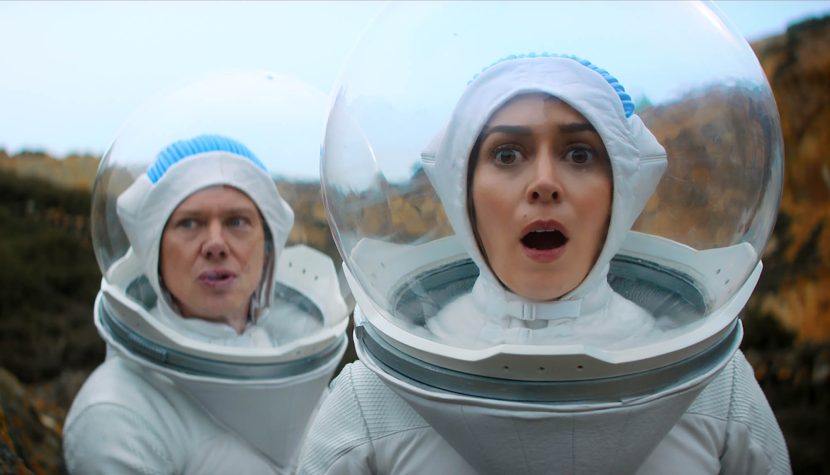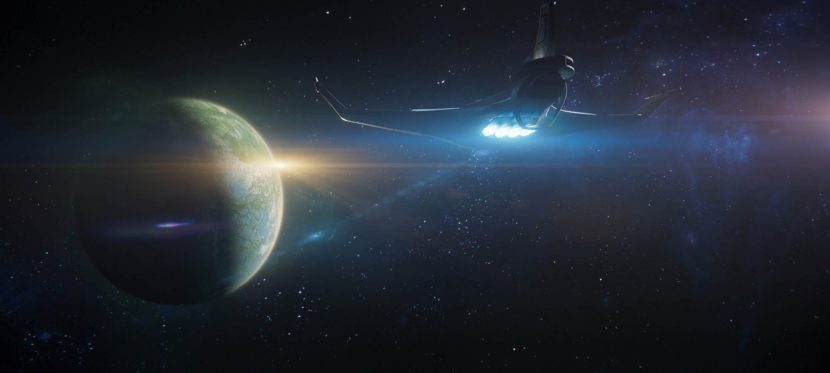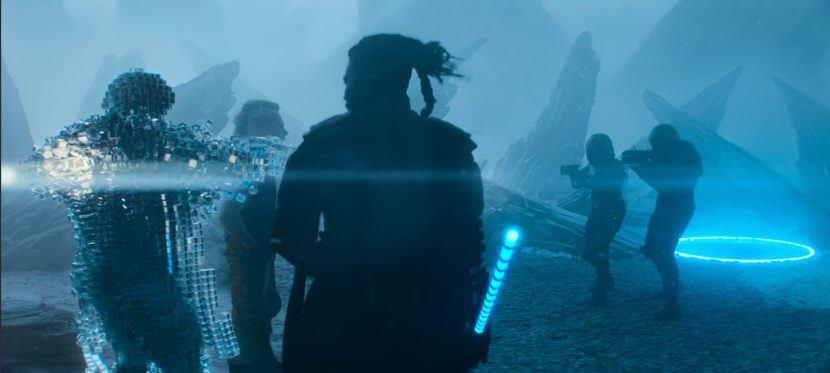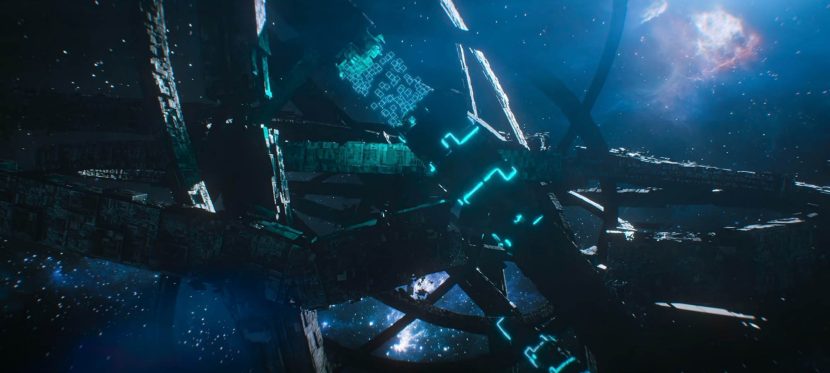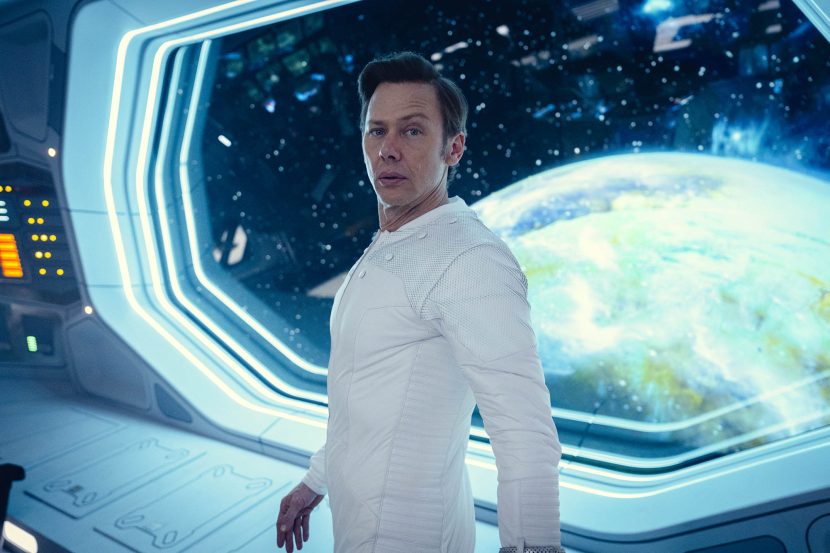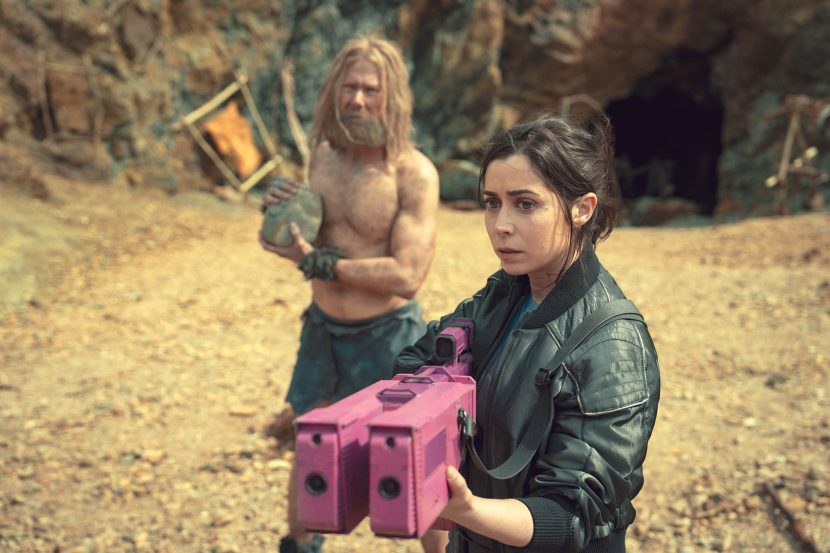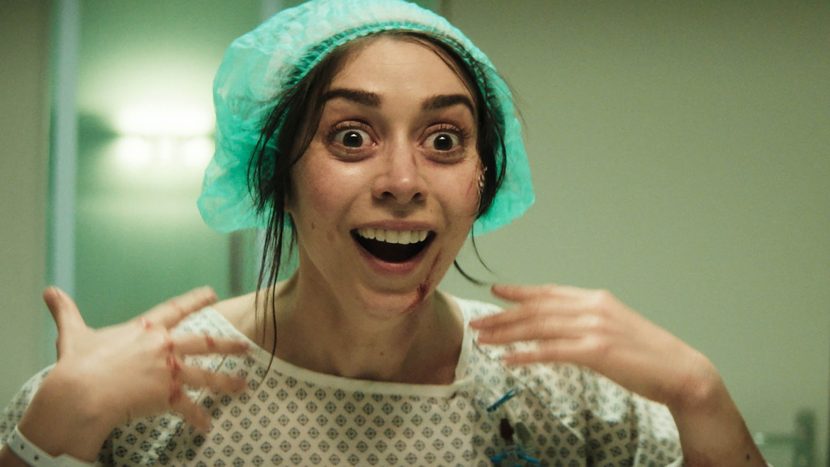The season 7 return of Black Mirror’s beloved USS Callister universe was both a gift and a challenge for overall series VFX Supervisor James MacLachlan. He’s our guest on this episode of the fxpodcast and from voxel teleporters to epic space battles, MacLachlan reveals how Black Mirror’s USS Callister: Into Infinity episode blends cinematic sci-fi and retro gaming.
Picking up from the acclaimed season 4 episode, Into Infinity had to satisfy a passionate fan base while expanding the world into new territory, not just narratively, but visually.“It was slightly daunting,” MacLachlan admits, “but exciting at the same time.”
Revisiting and rebuilding the Callister
While Framestore’s original Callister model was handed over to primary vendor Union VFX, nearly everything else was newly built. Advances in VFX pipelines since the original meant the team could push fidelity and flexibility, but also had to carefully manage legacy designs alongside all-new elements.
Over 200 VFX shots were delivered for the episode, with at least a quarter fully CG, including complex space battle sequences and new environments such as the Heart of Infinity, a massive gyroscopic structure that evolved over months of design discussions. Inspirations ranged from The Dark Crystal to Event Horizon, before the final version incorporated PCB board–like detailing as a nod to the episode’s layered gaming aesthetic.
Serving two masters: cinematic space & retro gaming
Series creator Charlie Brooker’s deep gaming knowledge, coupled with director Toby Haynes’ visual instincts, allowed the show to blend Black Mirror’s grounded sci-fi tone with playful retro-gaming flourishes. Early concept tests explored “frag” effects from shattered glass to voxelised cubes, while new teleportation effects broke characters into large-resolution voxels before reassembling them — aided by practical on-set lighting rigs for interactive realism.
Dogfights, design, and choreography
The epic battle around the Heart of Infinity drew inspiration from WWII dogfights, Top Gun: Maverick, and even the F1 drama Rush. Careful lighting design anchored audience orientation, a single strong key light provided consistent directionality across cockpit plates and fully CG exteriors, helping blend practical and digital seamlessly.
Previsualisation was decidedly low-tech at times, for example paper planes and iPhones in the production office, before evolving into motion-controlled camera passes, digital doubles, and complex compositing. In one meticulously timed gag, actor Jimmy Simpson handed a drink to his own clone mid-scene, a shot MacLachlan’s team “high-fived over” before discovering it played off-screen in the final cut.
Bringing space inside: LED wall production
A major shift from season 4’s green screen workflow was the use of a large LED wall for cockpit exteriors. Providing both interactive lighting and final-pixel backgrounds, the wall displayed 5K planetary plates, hyperspace runs, and custom environments designed by Union VFX and Terraform. The immersive setup not only improved realism but also delighted cast members seeing the updated set for the first time.
The balancing act
For MacLachlan, the biggest challenge, and joy, was balancing the episode’s tonal range: comedy, drama, and tension all existing within the same frame. It was, he says, “a hell of a career” moment: blending homage, innovation, and sheer VFX craft into an extended, movie-length sequel that both honours and expands a fan-favourite corner of Black Mirror.

